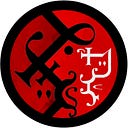Travelogue 9 — Conversations at Mariza’s
Lord Aspis’s selected list of Mizanian Taverns and Inns.
Mariza’s.
Bazaar’s Eastern Gate. Central Dwarven cuisine.
Mariza’s is a reliable institution among the chaotic options of the Bazaar. Their famous lamb stew has been cooked continuously in the same pot for four generations, providing unique notes and textures. You can taste it over some coarsely milled wheat ( cuscus ) or as a filling of flaky pastries ( Burek). Very mixed clientele, with porters, sailors, merchants, and scholars all sharing the long tables. Automated waiters are a touch of innovation in this very traditional locale.
After all the fuss we needed some rest and headed out to a Dwarven tavern, following Aspis’ advice.
The tavern occupies an entire side of the square outside the Bazaar gate. It was like it “conquered” the nearby buildings now connected together by a long canopy. A couple of the “acquired” buildings had the front wall torn down, making them kind of nooks. All the tables were full: even if it was the middle of the afternoon, many harbor workers already ended their shift, which probably started at the break of dawn.
We quickly understood that we had to make people scoot along the branches to “find” our seats. I was squashed between the Lord and Minotaur Lady and the Poor Bazim was almost sitting with one leg on the viscount lap, the other on a Dwarven sailor.
The bar maiden came and politely yet briskly asked us how many cuscuses and how many bureks (that was the only choice) and then how many “blondes” and how many “reds” (meaning the kinds of beer). We asked two and two of both.
While we were waiting we were captured by the constructs that served the tables. They were boxes of cogs with legs, arms, and a head with some funny hat. The maidens that took the order went to them and pushed some buttons and pulled some levers in the insides of the mechanical men, probably giving them instructions.
I couldn’t believe they were actually automatons, as in they are not piloted in any way, but probably the artificers are in a quiet place to keep concentration. I counted six constructs, which means that there are probably two people controlling three each, a challenging but manageable multitasking. Or maybe it’s only one person, but that would mean the clockwork waiters have a notable degree of automation.
One of the waiters quickly came to us with our food and drinks. As an experiment I tried to talk to it, asking for some water but it ignored me. I had the feeling its eyes/lenses gave me a look or reprimand, like saying “What are you trying to do, lady?” but it must been an impression.
The stew was delicious even if inappropriate for the season: generous in taste, size, and substance it’s easy to see how it’s a worker’s favorite. The pastry was also delicious and the triangular shape with the filling close in made it quite practical to eat. I noticed some dwarven boy came and went with bakest full of them, probably delivering it to someplace, and I get it, they are perfect “on the go food”.
“The dwarves have a lot of this stuff savory pastry, they put it in a satchel and bring it to the mines or whatever they work”. An infernal guy interjected while we were talking about the topic. It was part of a group of sailors sitting in front of us. It was not the first person we chatted with, the proximity and continuous coming and going of clients gave us plenty of conversations. From elvish sugar merchants to fox carpenters we spoke with people from all over the world in just a couple of our. This is one of the charms of Mizani: the city that is the world.
But it is not all sunshine and roses, I have never seen so many fights spring out in a tavern in so little time: orcs of different nations unseating knives, diabolist priests and spirits’ way monks throwing hands at each other, shouting matches between dwarves and gnomes. All these incidents were quickly quelled by the bar maiden. They must have some special training because I saw them subdue massive (and massively drunk) patrons just twisting the rowdy guys’ arms on the back or grabbing them in the inside of the elbows.
Two elder guys, one minotaur and a human from Erebos, explained to us that there is a fighting style in the dwarf’s nations based on joint locks and pressure points, in which the maidens were quite expert, apparently. The two were retired arena fighters, here in Mizani to write a manual on unconventional fighting styles. And I must say they betrayed the stereotypical Erebosian bloodthirst, raising their head like alarmed guard dogs any time a shout or any sound of possible violence was heard.
The sun was just beginning to set when we left. It felt like we were coming home from a late night, with all that drink and talk in the tavern.
On the way to the Xenodochium, Lord Neberius started pondering what to do the next day.
Go on a relaxing bath in the Elvish District. (After an exciting day, better take it slow).
Go on to find some lurid and exciting books about crime and punishment. (Tha Marshaless piqued the Lord’s interest in justice and high drama).
Go to watch some fights in a fencing school. (the two Ereobosian men kindly invited us).
